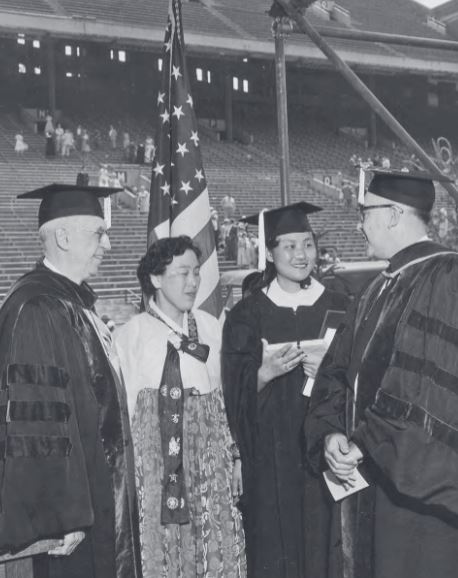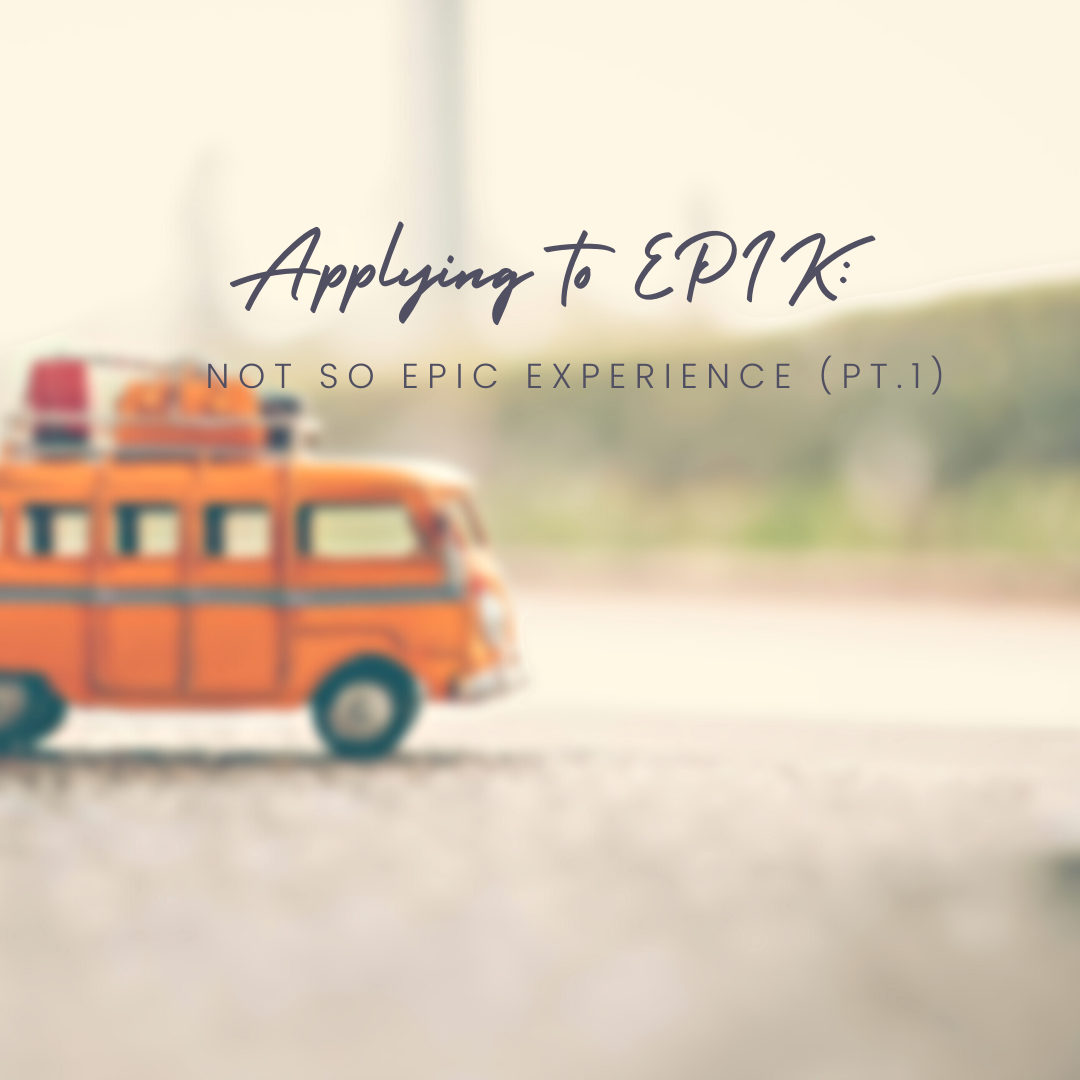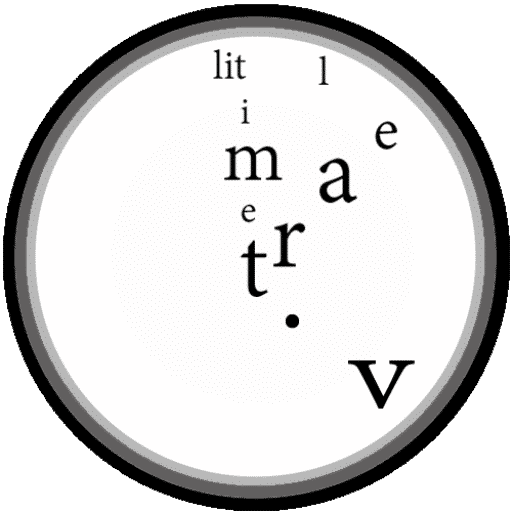
It’s past Asian American and Pacific Islander Heritage Month, but I would still like to share Chung Sul Youn’s story. It is not as well known as it ought to be, especially considering the fact that she was a pioneer in many different ways. As one of the first Korean immigrants to the U.S., she paved the way for Koreans, Asians, women, and scientists.
Chung Sul Youn (Sue Kim)

I learned about Chung Sul Youn only after talking to a Korean War veteran I wrote to this summer. The Korean War veteran, Mr. David Valley, shared the many achievements of his wife, Chung Sul. He and Sue (Chung Sul) had met and married after losing their wife and husband, respectively, to the devastating effects of Alzheimer’s and dementia.
After learning about Chung Sul’s life briefly from Mr. Valley, I was able to order his biography of her, which is titled, Can Do: Biography of Chung Sul Youn Kim. And finishing the book, I feel like I’ve unearthed an invaluable story, a little known history that needs to be shared.
Let me share Chung Sul’s story with you.

Early Years

From Can Do: Biography of Chung Sul
Youn Kim by David J. Valley.
Chung Sul Youn was born in Korea on December 21, 1932. She grew up in the Korea annexed and oppressed by the Japanese Imperial government. It wasn’t until 1945 that Chung Sul and her family lived in a free Korea. Despite the harsh colonial rule, Chung Sul’s family wasn’t as affected by the Japanese government’s immoral actions as the other poor Korean families. Her father, In Sang Youn, ran a successful, independent business manufacturing ondol paper, so he was able to educate his children and provide for his family even in those difficult times. Hence, after Korea attained its independence from Japan, Chung Sul attended Seoul National University, which is still considered the best in South Korea.
The Korean War
Tragically for the Koreans, only five years after their liberation from Japan, the Korean War broke out. On June 25, 1950, communist North Korea (backed by the Soviet Union) attacked South Korea. The sudden, bloody invasion interrupted everyone’s lives. People scrambled southward to stay alive, leaving behind their homes and the lives they knew. Chung Sul and her family also evacuated away from Seoul, eventually escaping to Busan when the Chinese intervened and ruined Korea’s golden opportunity to unify under democracy.
showing the phases of the Korean War. Click HERE to visit the page.
*The naming of “Sea of Japan” shown in the video is contested.
It was during this chaos that Chung Sul’s father decided to send his children to the United States to further their education. He knew from early on that Chung Sul was an exceptional chemist and scholar. He believed that she would “become a world-famous scientist – the next Madame Curie.” (Valley 115).

female scientists in history. Library of Congress, Prints & Photographs Division, LC-DIG-ggbain-07682 (digital file from original neg.)
Studying in the U.S.
After applying and getting accepted by Dennison University with a tuition scholarship, Chung Sul left her home country in 1951 to further her studies. From there, she transferred to the University of Illinois in Urbana to study chemical engineering.
A professor at University of Illinois told her that she could not be a Chemical Engineering major. His reason was the following: “females cannot handle the courses…The last time [they] had a female [major in Chemical Engineering] was in 1932, and she failed miserably” (Valley 140). These were times when women weren’t seen as capable of studying science.
But she proved the professor and anyone who doubted that they were completely wrong.

with her mother Yong Kim, University of Illinois
President Lloyd Morey and Liberal
Arts & Sciences Dean Joseph R. Smiley
(Source: Mass Transfer: News from Chemical and Biomolecular Engineering at Illinois. Spring/Summer 2017)
Chung Sul graduated with the highest grade average, receiving multiple honors. She was even admitted as an Honorary Member of Tau Beta Pi Society for Integrity and Excellence in Engineering when women were not accepted as regular members. Chung Sul went on to earn a Ph.D. in Organic Chemistry from Cornell University.
She became the first Korean woman in Korean history to earn a Ph.D. degree in the field of science.

Youn Kim by David J. Valley.
Further Accomplishments
To summarize, Chung Sul (Sue) worked for many different corporations: Standard Oil of Ohio, Georgia Pacific, University of California Davis, Aerojet Corporation, and California State University, Sacramento. Throughout her professional journey, she faced (again) prejudice and skepticism as an Asian woman. She was told that she had “two strikes against [her]: [she was] an Asian, and a woman” (190).
But she defied all expectations as she…
- “found a way to copolymerize acrylonitrile with bulky hydrocarbons, 1,2-olefins” at Sohio (187).
- “discovered ligno-sulfonamides produced by the reaction of the waste pulp ligno-sulfonates and fatty amines from meat packers” were “excellent oil-based emulsifies” and helped Georgia Pacific receive five patents based on her discoveries (194).
- “established the Polymer Research Institute” at California State University, Sacramento.
….and achieved many more things that you should read about in her biography! 😉

Youn Kim by David J. Valley.
An Inspiring Individual
What I found particularly inspiring about Chung Sul Youn, Sue Kim, is that not only is she an incredible chemist who made positive impacts wherever she went, but also she always knew what was truly important in life: families and friends.
Upon marriage, she supported and followed her husband’s trajectory across the country all the while making contributions to society and science in various ways that she could. She made scientific discoveries while giving birth to and rearing two children. When her father fell ill, she left everything to be at his side. These are just a few examples of how Chung Sul chose her families and friends over furthering her achievements and success. She was a prolific chemist, a good friend, caring daughter, supportive wife, and a loving mother. Despite her unlimited potential and talents, she chose to be there for her loved ones over work when forced to choose between the two. She never forgot to love and care for her loved ones.
In Conclusion
Back in the day when being an Asian woman was a great hindrance to one’s career, Chung Sul broke all prejudices and expectations. She truly was a pioneer.

Chung Sul Youn (Sue Kim)
I recommend Can Do: Biography of Chung Sul Youn Kim, to Korean and Asian Americans. If you are Korean or Asian, you will be able to relate to her life. She was one of the first Koreans to arrive in the U.S. and experienced what Asian Americans experience even today. If you are a woman studying chemistry or are working in the field, you will learn how she paved the path for female chemists in the ’60s and ’70s.
Even if you aren’t a female chemist of Asian backgrounds, Chung Sul’s story is bound to inspire. It is a vivid biography of an individual who saw beyond work and success.
It’s about an individual who knew what truly matters: the people around you and the time you spend with them.
P.S. I just found out that Dr. Chung Sul Youn “Sue” Kim had been awarded the 2022 Distinguished Alumni Award from the University of Illinois Urbana-Champaign! As the “first woman to have received a bachelor’s degree in chemical engineering from the University of Illinois Urbana-Champaign” and as innovator, research scientist, professor, director, and pioneer, it’s no surprise. 👍
Update 8/28/2025: This month, I got to speak with Dr. Kim’s sister, Won Ok, who is 5 years younger than her. She told me that she wanted to share aspects of Dr. Kim beyond her academic and professional achievements, including her many outdoor adventures and her “most generous, compassionate” heart.
One of the anecdotes she shared that I was truly amazed at (and still am!) was when Won Ok immigrated to the U.S. during the Korean War, following after her sister. Chung Sul, who was an undergrad at the University of Illinois at the time, and Won Ok, who was a high school student, had to live apart. But Chung Sul always looked out for her little sister. Won Ok said that Chung Sul even cooked Korean food for her (bulgogi beef and rice) when there weren’t any local Asian grocery markets at the time! Even when the sisters lived apart (one in a college dorm in the middle of a busy schedule) and had no car (or Tupperware, for that matter!), Chung Sul managed to make traditional Korean food, pack it somehow, and bring it to her little sister who would have been homesick in a new country. This reminded me of what I read in Mr. Valley’s biography, when Chung Sul made kimchi (again, no Asian ingredients!) for her older brother. Won Ok laughed and said that the bulgogi and rice tasted horrible (and I remember reading that the kimchi tasted bad, too), but she shared how incredibly thoughtful and compassionate the gesture was. And I cannot agree more!
It was such a privilege to talk with Won Ok and listen to more inspiring stories about Dr. Kim. 😊







